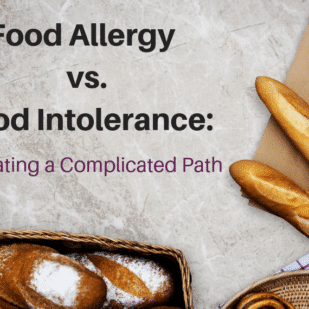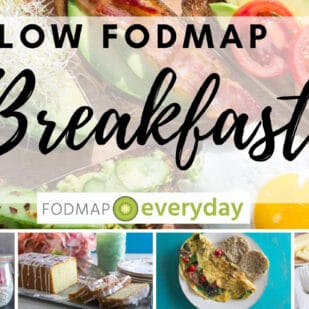Learn How To Read A Low FODMAP Certified Food Product Label
Please read this article, How To Read A Low FODMAP Certified Food Product Label, in conjunction with two others: How to Read a FDA Nutrition Facts Label and What Is A Low FODMAP Serving Size?
All three articles work together to provide you with a most complete description of what you need to know.
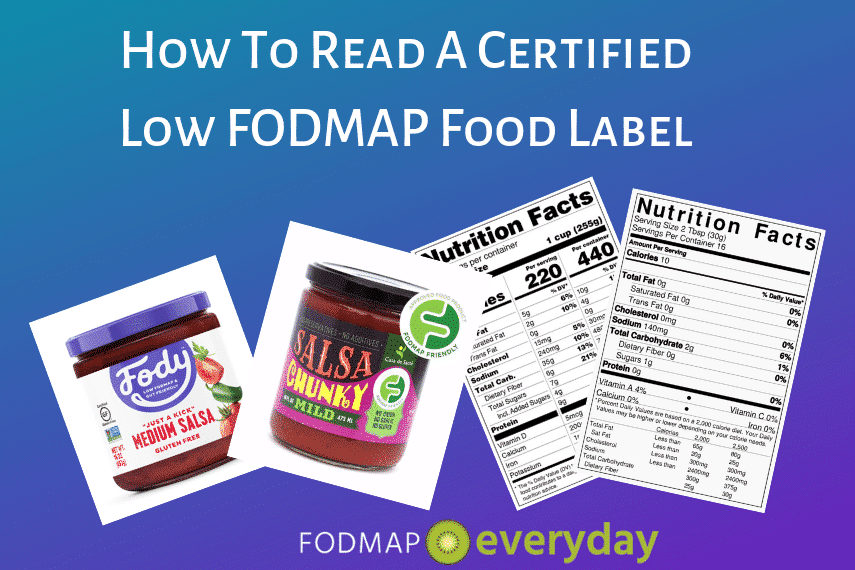
It takes very specific lab testing to determine the FODMAP content of a prepared low FODMAP food product, which will not be reflected specifically in the traditional FDA Nutrition Facts Label.
Both Monash University and FODMAP Friendly are currently the ONLY two certifying bodies and they, and the food product manufacturers who pay for these certifications, are working hard to bring all of us assurance that certified food products are low FODMAP.
One aim of this article is to familiarize you with these logos and what they represent because we have seen time and time again that many people do not understand what they mean.
Monash University & FODMAP Friendly Have Product Certification Programs
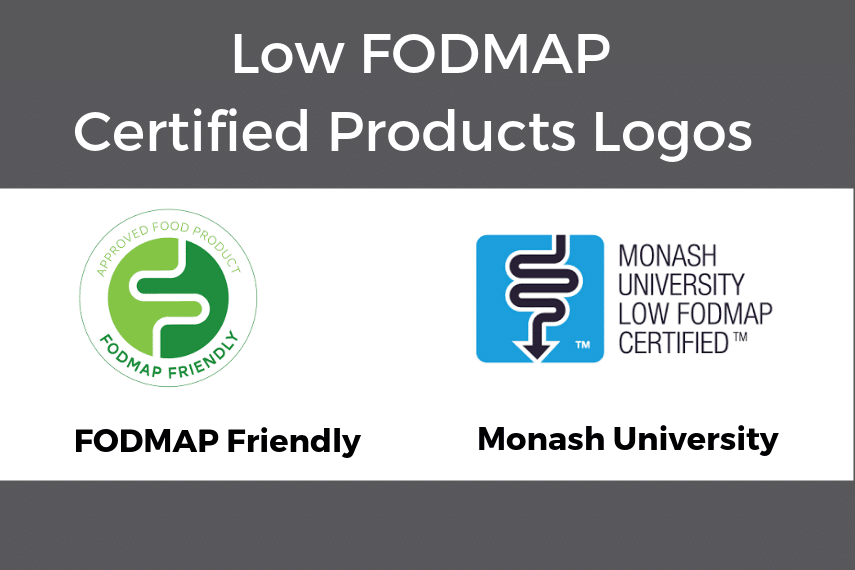
When you see either of the logos above on a prepared food product label it means that the item has been lab-tested and is guaranteed to be low FODMAP per the serving sizes suggested.
Where to Find The Logos On Products
You can see some examples of the logos on actual products here, below:
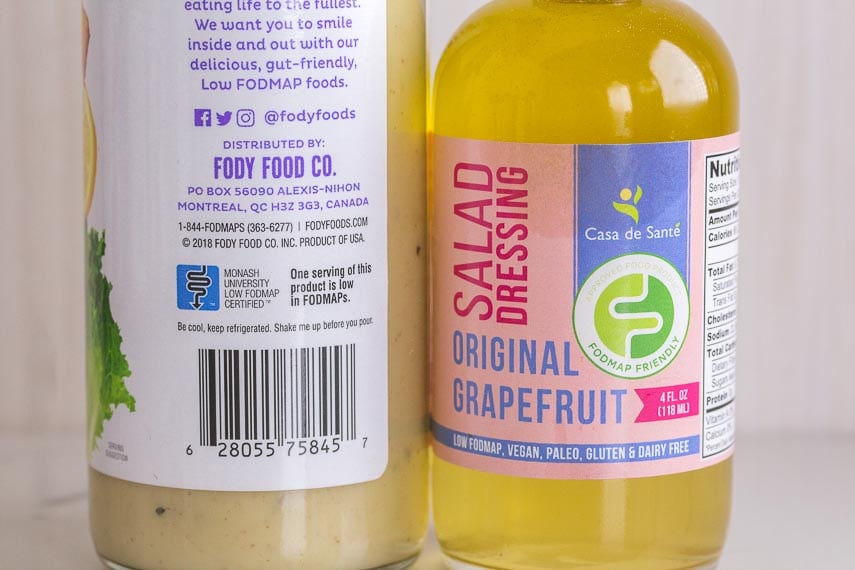
On the left above is the back of Fody Food Caesar Dressing and you can see the blue Monash University Low FODMAP Certified logo.
On the right above is the front label of Casa de Santé’s Original Grapefruit Salad Dressing and you can see the green FODMAP Friendly Approved Food Product logo.
Both of these products have been lab tested for FODMAPs and are low FODMAP per the serving size suggested.
Trust the Certified Logos
We have had people ask us if a food product is low FODMAP, showing us a label that sports one of the certified stamps of approval, which obviously means that the logos are not as well understood, as they might be.
Rest assured that if you see a product with one of these logos shown above (the blue arrow for Monash or the green interlocking double “F”s for FODMAP Friendly) that the food has been lab-tested and is low FODMAP. Even if it has an ingredient that you consider suspect.
“High” FODMAP Ingredients in “Low” FODMAP Prepared Food Products
Let’s look at the ingredient label below, which happens to belong to Schär Wholesome White Loaf gluten-free bread. Note the inclusion of honey on the ingredient list.

Honey is usually considered a “high” FODMAP ingredient, but there are low FODMAP serving sizes of honey. And even though they are as small as 1 teaspoon (per lab-testing by Monash), you can be confident that the amount of honey in this food product is low enough that this Schär Wholesome White Loaf has been certified as low FODMAP by Monash University after lab testing.
Our point is to trust the certification processes, even if something is at first hard to understand. The product manufacturers are taking their products through the certification process to ultimately make it easier for you to know what is low FODMAP.
When you see a Monash University or FODMAP Friendly Certified Low FODMAP logo, the food IS low FODMAP. Period. Lab tested and approved.
You might also like our article, High FODMAP Foods With Low FODMAP Serving Sizes.
How Much Can You Eat of a Low FODMAP Certified Product?
This is a great question.
You, like us, probably thought that the serving size suggestion on the FDA Nutrition Facts Label on the certified product is the amount that is low FODMAP and being recommended as a low FODMAP serving size.
This is partially true and yet very much not the whole story.
Please read our articles What Is A Low FODMAP Serving Size and How To Read a FDA Nutrition Facts Label in conjunction with this article and especially to use as a reference with this section.
The “serving size” on the FDA food product labels is based on RACCs (Reference Amounts Customarily Consumed per Eating Occasion) and are “guidances”.
They are not meant to tell you how much to eat for health reasons or otherwise. They are meant to reflect eating patterns that have been self-reported, which is a highly unreliable mode of reporting.
And they have nothing to do with FODMAP testing and reporting.
Two of my favorite new documents are:
and
In these government documents you can find pages and pages of explanations as well as all the categories that the FDA has set, with their accompanying “serving size” amounts set by RACC data.
Apparently All Brownies Are The Same In The Eyes of The Government
For instance the government comes up with categories, such as “Brownies” or “Salads”.
Sometimes the sections have sub-sections, like “Salads” has sub-sections titled “Gelatin salad”, “Potato and Pasta Salad” and “All Other Salads”, yet apparently the government thinks that all brownies are the same, as there is no sub-section.
Then, for each section and sub-section, based on RACCs, the government sets a “serving size” amount.
This is why, for instance, all packaged brownies will say that a serving size is 40 grams (if the manufacturer has followed these “guidances”), whether it is a low-fat brownie, cheesecake brownie or gluten-free brownie.
Since the FDA thinks all brownies are the same, they will all be given the same serving size listed on their Nutrition Facts Label.
What About FODMAPs?
Let’s look at the images below representing two low FODMAP salsas from different companies. One certified by Monash University and one by FODMAP Friendly.

First (above) we have Casa de Santé Salsa, certified as low FODMAP by FODMAP Friendly. The ingredients are listed as Tomatoes, Water, Tomato Paste, Tomato Juice, Green Chili Pepper, Jalapeno Peppers, Vinegar, Sugar, Salt, Cilantro, Lemon Juice, Spices.
Note that the serving size is 2 tablespoons (30 g).
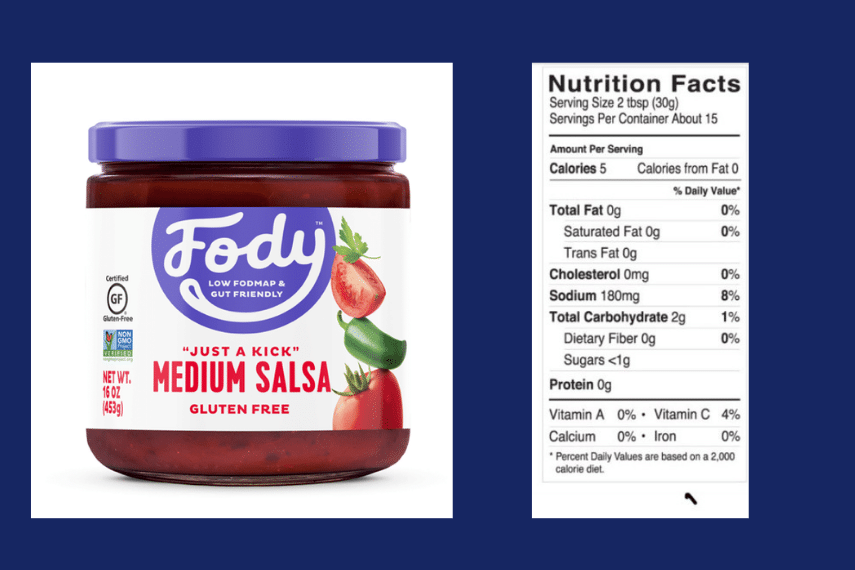
Then, (above) we have Fody Salsa, which is certified low FODMAP by Monash University, with ingredients listed as Diced Tomatoes, Water, Crushed Tomatoes, Jalapeno Peppers, Cilantro, Cider Vinegar, Sea Salt, Lime Juice Concentrate, Natural Flavors, Cumin.
Note that the serving size is also 2 tablespoons (30 g).
Both sport serving sizes of 2 tablespoons (30 g) because that is the serving size for salsa set by the FDA based on RACCs.
Note that certain other listings on the nutrition facts label are different. The calories, sodium, sugars, and vitamin C are all different from one salsa to the other. The FDA Nutrition Facts Label allows you to compare like-products, so if you want less sodium, for instance, this information would be helpful to you.
The FDA label can be helpful, just not as much as you might have thought when it comes to FODMAPs. Because again, this information has nothing to do with FODMAP testing.
Most people following the low FODMAP diet want to know how much of something that they can eat. Unfortunately us consumers are not being given this information on the food product labels.
Want To Know The Maximum Low FODMAP Amount You Can Eat?
If you want to know the MAXIMUM low FODMAP amount of a certified low FODMAP product that you can eat then you have to contact the product manufacturer. They may or may not have that information and it is up to them to disclose if they do.
When it comes to Monash University Certified products, the manufacturer will have to have requested the upper low FODMAP serving size from Monash during testing, so they may or may not have that information to share with you. It is also at their discretion as to whether they do share it.
The serving size on the FDA Nutrition Facts Label is NOT necessarily the largest amount of that food that you can eat and still have it be low FODMAP.
FODMAP Friendly has told us that they provide the manufacturer with lab results for the amount of the product that the manufacturer has asked for and additionally what FODMAP Friendly calls a “standard base size” of 100 g. They will also provide a maximum low FODMAP serving size, if requested. Again, it is up to the manufacturer to share any information that is not on the label.
We know from personal correspondence with manufacturers that in many cases you can eat more – sometimes a lot more (6x more in a few cases!) – of a low FODMAP certified product than is suggested by the FDA “serving size”, and still have the food remain low FODMAP (per lab testing results).
The Takeaway
Make sure you understand what the FDA Nutrition Facts Label represents, and know that the “serving sizes” on those labels do NOT necessarily represent the maximum amount of that product that is low FODMAP.
If you want to know the maximum amount of a certified food product that you can eat, contact that food product manufacturer. They might have the information and they might not. It is up to them to share any information.
You might also be interested in our article, What If A Food Hasn’t Been Tested For FODMAPs?
And if you are looking for Facebook groups that focus on Certified Products, they exist! Check out our article on Admin/Moderator Hely Weinberg for more info and direct links.
